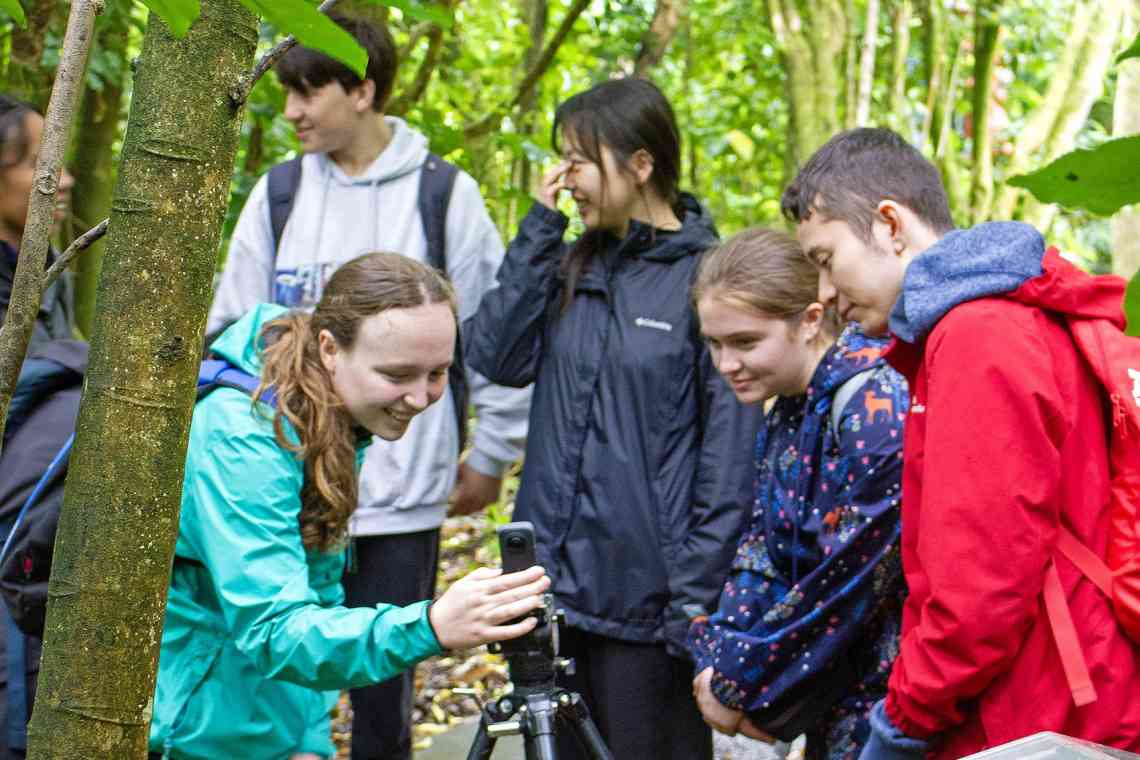
In a dynamic new WeSTEM project, rangatahi at Rutherford College are working with University of Auckland – Waipapa Taumata Rau researchers to explore how innovative technologies can be used to improve their school community and local experiences of being 'Te Atatū proud'.
This project is largely inspired by the Tika Māori and Pacific: Tales of Diversity kaupapa (TMAP), an initiative created by Te Pūnaha Matatini. The motivation is to create exciting narratives for Māori and Pacific rangatahi to step into the STEM space for the benefit of everyone and increase the diversity in this space. Deputy director of Te Pūnaha Matatini, Associate Professor Michael O’Sullivan, reflects that “if we are going to have true innovation and solve some of the really hard problems in the world … it needs to come from a range of different perspectives.”
The TMAP team have embarked on a years-long partnership with Rutherford College to co-design and evaluate STEM learning experiences for Māori and Pacific students to show these rangatahi the potential STEM pathways to which they could aspire.
TMAP has funded several paid internships for year 13 students to work alongside the Te Pūnaha Matatini team and also received co-funding from WeSTEM to purchase equipment and fund other costs for their technology-inspired project. Their WeSTEM project has several parts, each looking at how technology can be used in different contexts to improve student experiences, environments and the Te Atatū community.
Technology to support student transitions to College
In the first part of the project, senior tauira partnered with scientists at Te Pūnaha Matatini and The University of Auckland – Waipapa Taumata Rau to create a VR experience for the school.
Using a 360° camera, the tauira mapped the school grounds from the entrance to the back fields. This footage is available to access by students who will be attending the school in the future, including those from neaerby Te Atatū Intermediate School. The goal is to reduce anxieties for new students who may be feeling unsure about the move to a high school environment. Using engineering and technology to create this engaging content gave participating tauira a great first taste of what 360° cameras can do.
Watch the 'Demystifying Rutherford College' video below.
Technology to monitor biodiversity and grow citizen science initiatives
The second part of the project takes students beyond the school grounds to explore Te Atatū peninsula. They have started an initiative to use 360° cameras to monitor the birds in the area to identify what species currently visit the peninsula. This baseline data is intended to lead to a citizen science pest control project in Te Atatū Peninsula in 2024 aimed at increasing the native wildlife population in the area.
In this stage of the project, the TMAP interns are setting up 360° cameras as the primary method of bird surveillance. They are using a tuakana–teina approach to learning, where the outgoing year 13 students will pass on their knowledge to the year 12s to continue the project after they're gone.
To develop their understanding of birds, students from the Enviro group recently went on a school trip to Tiritiri Matangi. Students learnt about the various birds that take sanctuary on this island, as well as the interventions that are in place to ensure that it remains pest-free. They had an opportunity to meet park rangers and conservation experts and hear about their stories.
The TMAP interns also demonstrated how to set up a 360° camera for bird monitoring so that next year’s cohort of students can continue to build on their initial monitoring data. Annette Goulding, the project lead and teacher, hopes that this will serve as a legacy piece for the year 13s when they leave the school, as their teaching will be carried on through the school's Enviro group and into the wider citizen science initiative.
Watch the video about Te Atatū bird monitoring below.
In addition to the bird monitoring, students will take an overarching view from the skies to the streams to monitor the health and biodiversity of the local Pixie stream, especially after heavy rainfall events.
Mindful of the dangers associated with water testing during heavy rainfall, and the timing of rainfall, the school will be using devices that capture stream water automatically during the event and store it to be collected when it is safe to do so. Students will also be operating underwater ROVs in this experiment to reduce any further need to spend time in the stream.
Technology to help make sports more accessible
As the final part of their project, students will further explore the use of new technologies in partnership with the local Te Atatū Association Football Club.
They have taken up the challenge of developing a VR experience of a football game with the goal of making football more accessible to people who are physically unable to play. This VR experience will provide them with an opportunity to experience playing the game virtually and to feel like being a part of their local football club.
This project demonstrates that there are many different challenges faced by our community, and science and technologies can offer useful tools for solving them. What we need, though, is more bright, young, diverse minds to see themselves as the problem-solvers and take hold of the tools and be part of creating the solutions.
We think many of these Rutherford College students are well on their way and can’t wait to see what they achieve next.